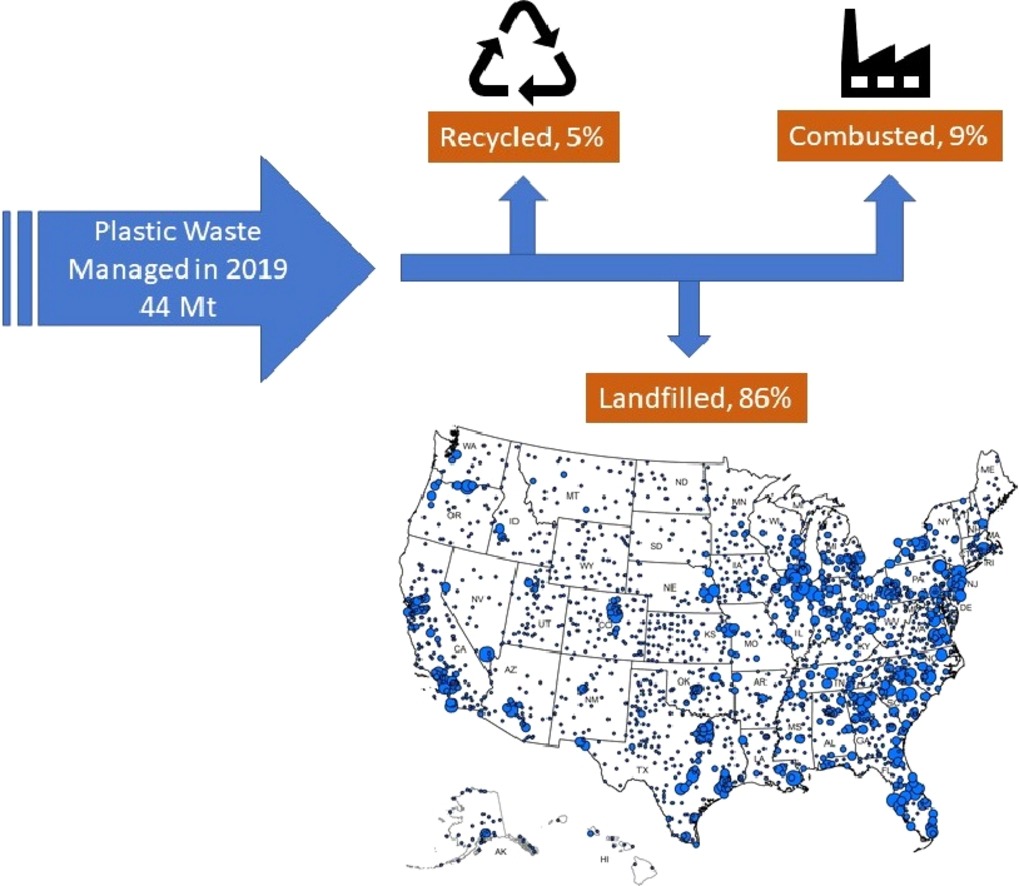Plastic Waste and Population Size Go Hand-In-Hand
- NPG
- May 9, 2022
- NPG Commentary
- 3 Comments
May 10, 2022
Amount of Plastic Waste Highest in Our Most Populated States
Recently, in what can only be described as an obvious outcome, it has been proven that the amount of plastic waste correlates with population size. According to a press release published by the National Renewable Energy Laboratory (NREL): “California, Texas, and Florida are the three most populous states and also have the largest amount of landfilled plastic waste.”
NREL is the U.S. Department of Energy’s primary national laboratory for renewable energy and energy-efficient research and development. The NREL team tasked with researching this topic “provided a look at how much plastic waste has been deposited in landfills, on a regional, state, and county level.” They estimate that “the amount of plastic waste in the United States is 44 million metric tons.”
The team’s goal to identify areas with large quantities of plastic waste was born from their hope to “highlight the economic opportunities that could arise by recovering their value through different processes.” Anelia Milbrandt, a senior research analyst at NREL and co-author of a new paper, “Quantification and evaluation of plastic waste in the United States” (published in the journal Resources, Conservation & Recycling), noted why this study is so important, sharing: “For us to tackle plastic waste pollution, we really need to understand better where those resources are. We would like to bring awareness to communities about the potential for these materials…I’m hoping this paper also increases awareness for industry and investors to take a look for opportunities.”
Fast Facts about 2019 Plastic Waste in the United States:
- 5% recycled
- 86% in landfills
- 9% burned to generate electricity
- Communities nationwide spent 2.3 billion on plastic waste disposal
- Plastic used for bags is among the most prevalent type found in landfills
 The group isolated two possible solutions for plastic that has not been recycled: 1) Develop new products that rely on these plastics to encourage their sorting and collection. And 2) Develop advanced sorting technologies that could eventually lead to increased use of recycled materials. “Plastic is not just an environmental issue,” Milbrandt noted. “It’s a waste management issue. It’s also a land use issue because landfills are closing in many areas. What do we do with all that waste? It has to go somewhere. I believe local governments and industry developers will see a benefit of this report by providing information to support decisions.”
The group isolated two possible solutions for plastic that has not been recycled: 1) Develop new products that rely on these plastics to encourage their sorting and collection. And 2) Develop advanced sorting technologies that could eventually lead to increased use of recycled materials. “Plastic is not just an environmental issue,” Milbrandt noted. “It’s a waste management issue. It’s also a land use issue because landfills are closing in many areas. What do we do with all that waste? It has to go somewhere. I believe local governments and industry developers will see a benefit of this report by providing information to support decisions.”
That plastic waste correlates with population size seems pretty straightforward. The value of this study is that it was proven, taking the conversation from hearsay to fact. NPG applauds the work put into this research. We will continue to speak out on the dangers of over-population, and we will continue to share more content from the fields of science and academia to prove our position further; the way forward towards a sustainable future is for the U.S. to slow, halt, and eventually reverse population growth in this country.



Pat Kittle
Favored subspecies of humans, multiplying rapidly, get entire months dedicated in their honor.
The Earth gets one day.
Carol A.
Humans are the consumer species. We breed more consumers unchecked. More consumers, more unnecessary and cruel animal suffering and death due to increasing demand for all animal products, as well as demand for scarce resources. More waste and garbage generated. Then more products are manufactured to meet the growing “demand” for more and more and more, etc.
A trease
Wow. WHat a shock. More people means more environmental effects. Somebody tell Biden and the left that their open borders and mass immigration are simply going to push their already out of reach environmental goals further away while helping degrade the environment in this country. Numbers count, even if you don’t like them.